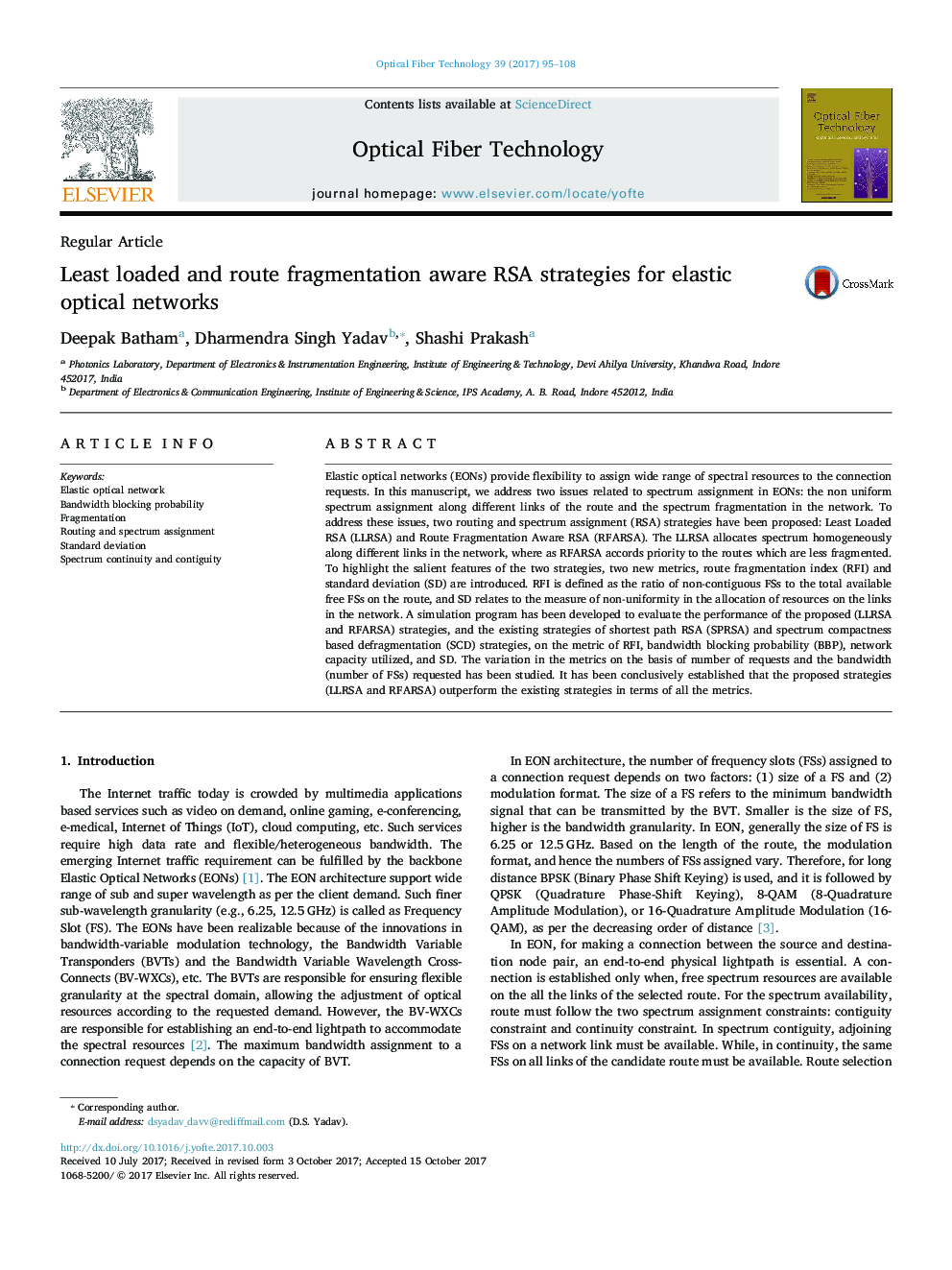| Article ID | Journal | Published Year | Pages | File Type |
|---|---|---|---|---|
| 6888381 | Optical Fiber Technology | 2017 | 14 Pages |
Abstract
Elastic optical networks (EONs) provide flexibility to assign wide range of spectral resources to the connection requests. In this manuscript, we address two issues related to spectrum assignment in EONs: the non uniform spectrum assignment along different links of the route and the spectrum fragmentation in the network. To address these issues, two routing and spectrum assignment (RSA) strategies have been proposed: Least Loaded RSA (LLRSA) and Route Fragmentation Aware RSA (RFARSA). The LLRSA allocates spectrum homogeneously along different links in the network, where as RFARSA accords priority to the routes which are less fragmented. To highlight the salient features of the two strategies, two new metrics, route fragmentation index (RFI) and standard deviation (SD) are introduced. RFI is defined as the ratio of non-contiguous FSs to the total available free FSs on the route, and SD relates to the measure of non-uniformity in the allocation of resources on the links in the network. A simulation program has been developed to evaluate the performance of the proposed (LLRSA and RFARSA) strategies, and the existing strategies of shortest path RSA (SPRSA) and spectrum compactness based defragmentation (SCD) strategies, on the metric of RFI, bandwidth blocking probability (BBP), network capacity utilized, and SD. The variation in the metrics on the basis of number of requests and the bandwidth (number of FSs) requested has been studied. It has been conclusively established that the proposed strategies (LLRSA and RFARSA) outperform the existing strategies in terms of all the metrics.
Keywords
Related Topics
Physical Sciences and Engineering
Computer Science
Computer Networks and Communications
Authors
Deepak Batham, Dharmendra Singh Yadav, Shashi Prakash,
